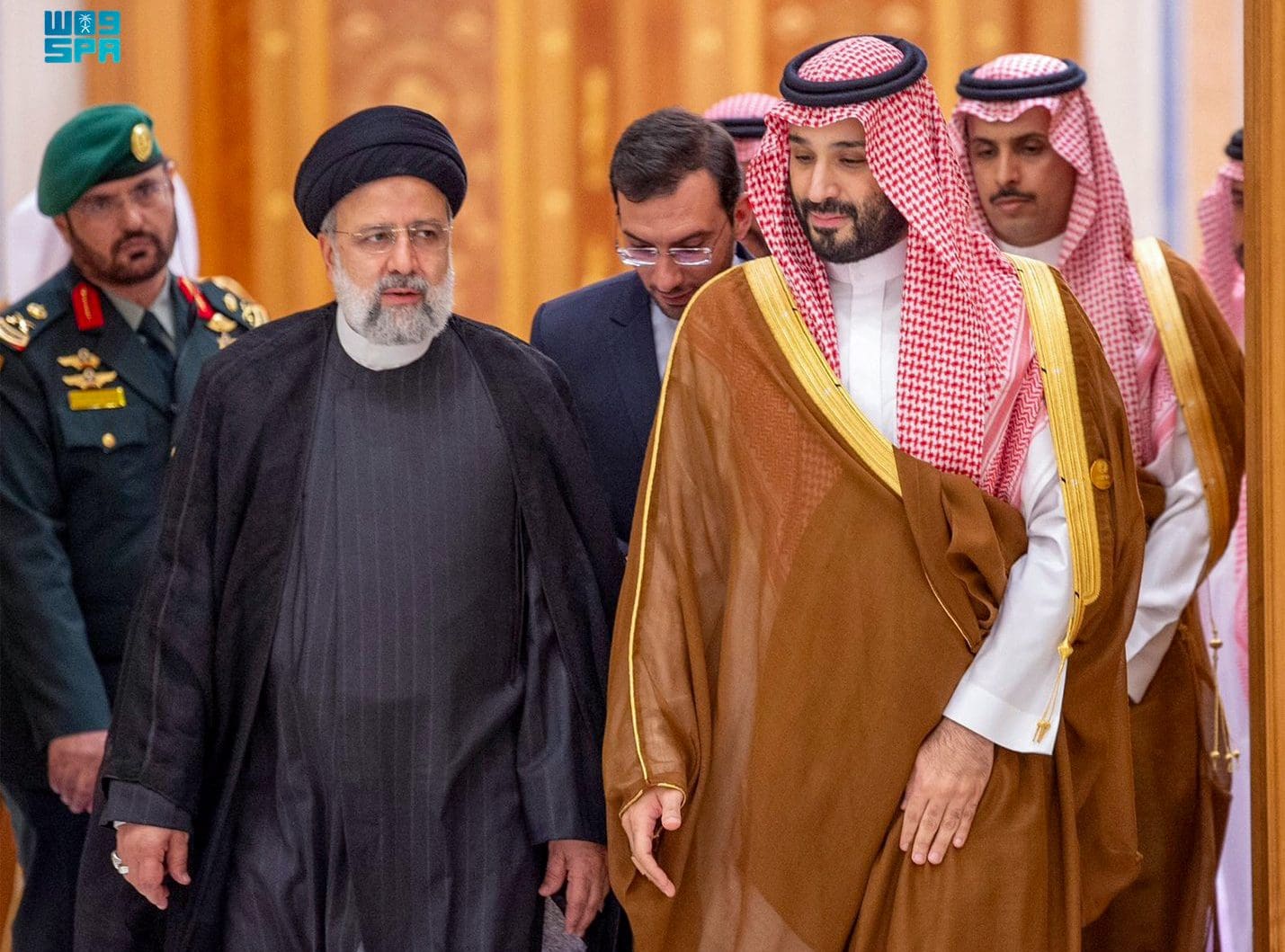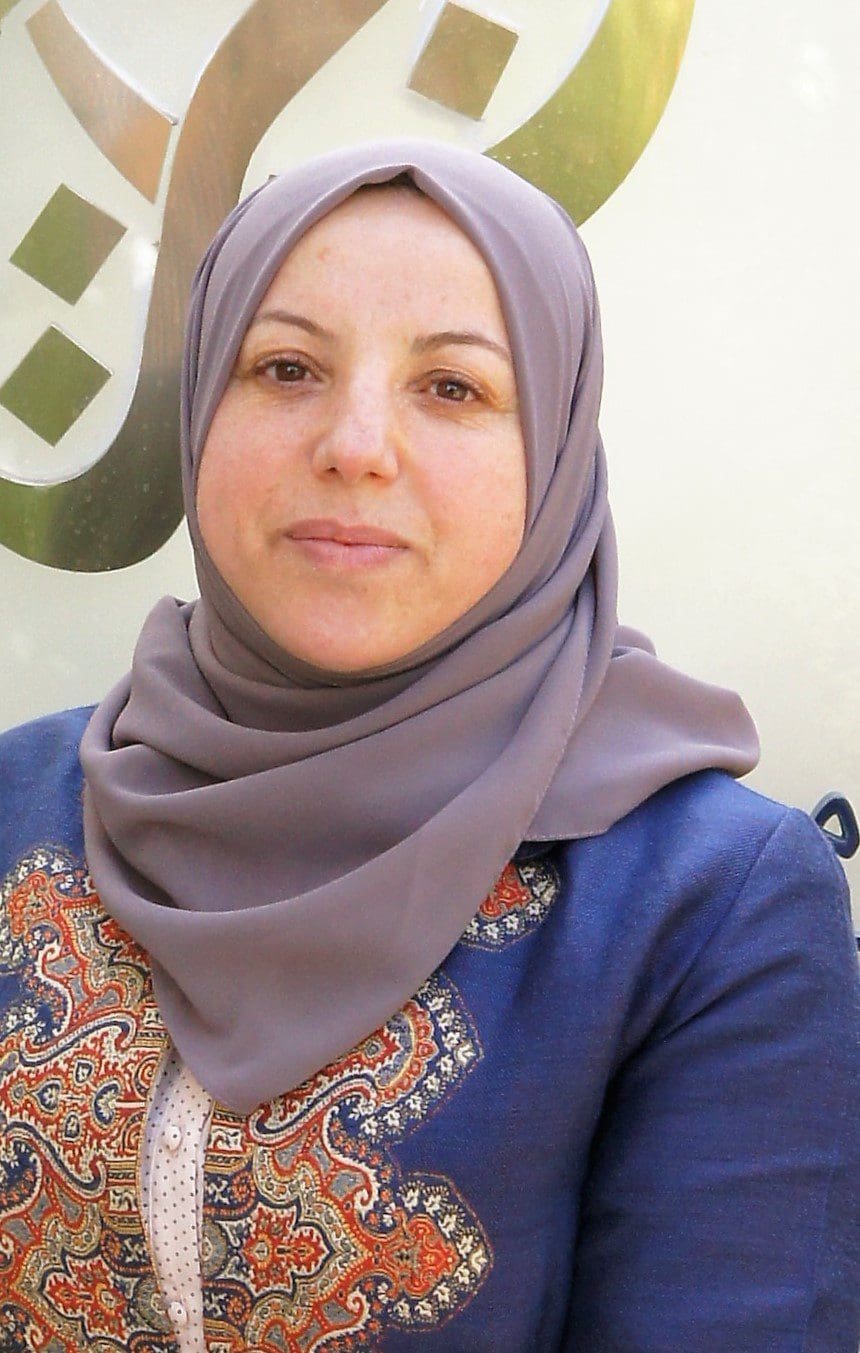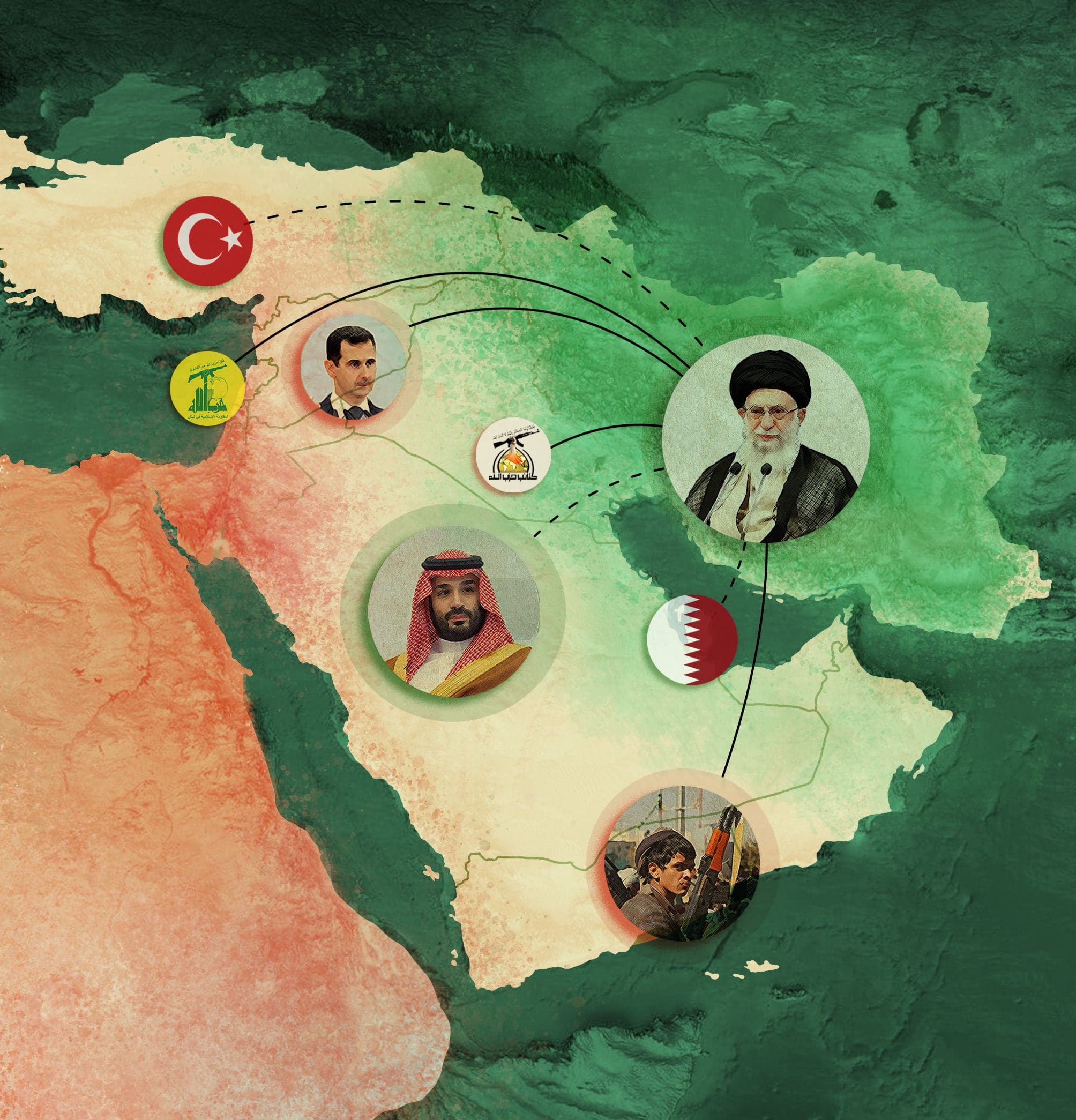
Opportunities and Challenges Along the Path of Saudi-Iran Relations
April 2024
In March 2023, Saudi Arabia and Iran agreed to resume diplomatic ties.1 Yet other recent events indicate a long road ahead for Iranian-Saudi relations. Notably, in June 2023, Saudi Arabia requested to switch the venue of a joint press conference, as the room featured a picture of the late commander of Iran’s Quds Force, General Qassim Soleimani.2 Another similar incident occurred when the Saudi football team Al-Ittihad withdrew from a match against Iran’s Sepahan in Isfahan, which houses a statue of Soleimani. The situation required a comment from the Iranian foreign minister, resulting in a decision to reschedule the match.3
The escalation of an athletic dispute to a diplomatic one, and the continued friction following the March 2023 deal, signals that enhancing the Saudi-Iran relationship requires more than good intentions. The nature of the two countries’ relationship remains competitive and conflictual. Their disputes include regional competition for status and influence at the level of the Islamic world. This chapter explores the successes and failures of the Saudi-Iranian rapprochement, its determinants, and its potential impacts on regional issues.
History of Saudi-Iran Relations: Constants and Variables
Since the Islamic Revolution, certain factors have driven Iranian foreign policy regardless of political trends. While each of the country’s presidents has adopted a distinct approach, the country’s relationship with Saudi Arabia remained a priority. The Iran-Iraq war marked an initial period of overt conflict between Tehran and Riyadh. Following the war, under President Akbar Hashemi Rafsanjani, Iran-Saudi relations entered a new phase, transitioning from conflict to competition for influence within a complex regional order. Iraq’s invasion of Kuwait in 1990, and subsequent defeat, fundamentally changed the balance of power. The presidencies of Rafsanjani and his successor Mohammad Khatami allowed Iran to gain advantages in the Organization of Islamic Cooperation (OIC) and the Organization of the Petroleum Exporting Countries (OPEC).
However, Saudi-Iran relations remained governed by two important variables. First, an unprecedented increase in the United States’ (U.S.) military presence in Gulf countries led to tension with Tehran. Second, Washington adopted a “dual containment” policy4 towards Iran and Iraq, which suited Saudi Arabia.5 As such, Tehran became convinced that Riyadh was fostering international hostility towards its nuclear activities, damaging its standing in the global oil market.6
Mutual threat perceptions were another reason for strained bilateral relations. Iran perceived Saudi Arabia as facilitating the United States’ political and security presence in the region, implementing economic sanctions against Iran, and generally collaborating to undermine Iran’s regional role. Conversely, Riyadh viewed Tehran’s active involvement in regional issues—with the Palestinian cause at the forefront—as an ideological and security threat.
Failed Initiatives
Despite several initiatives, former President Mahmoud Ahmadinejad’s foreign policy approach failed to reduce tensions. This was primarily due to sectarian escalation in Iraq and the intensification of competition in Lebanon and Afghanistan. In December 2007, Ahmadinejad attended the 28th Gulf Cooperation Council (GCC) Summit held in Doha, marking the first time an Iranian president was invited.7 That same year, Saudi King Abdullah bin Abdul-Aziz invited the Iranian president to perform the Hajj pilgrimage—another first in their bilateral relations.8
However, the relationship was still strained. Leaked documents disclosed that the Saudi monarch called on the United States to strike Iran and “cut off the head of the snake” to prevent it from continuing its nuclear program.9 The tone of these documents—caution, fear, and suspicion—is inseparable from the narratives and perceptions held by both Arabs and Iranians.10
When Rouhani came to power, he prioritized mending relations with the West. Moderates within the reformist movement argued for improving relations with Washington, some even asserting that Iran’s economic issues could not be resolved without addressing this dilemma.11 However, this direction suffered a severe setback under U.S. President Donald Trump who withdrew from the JCPOA and reimposed sanctions.12 Moreover, despite proposing the “Hope” initiative with Gulf countries, Rouhani did not prioritize regional relations.13 This could be considered as one of the fundamental differences between Rouhani’s foreign policy and that of Raisi and his “neighborhood” policy.
Ongoing Controversial Issues
To date, Tehran and Riyadh have taken significant diplomatic steps by exchanging high-level visits and diplomatic missions. However, caution remains characteristic of the rapprochement, and many crucial issues are unresolved that cannot be separated from the two countries’ relations.
Regional Competition
Regional competition, particularly Iran’s regional influence, may be one of the primary obstacles hindering good relations. It has driven tension for decades, with significant consequences evident in Iraq, Syria, Yemen, and the Gulf. Raisi, for instance, has committed to continuing to enhance Iran’s regional influence. This issue was a prominent theme in his electoral debates and post-election statements, and was included in his 2017 electoral program. Additionally, Supreme Leader Ali Khamenei’s ideology inspired Raisi’s focus on strengthening Iranian national security,
among other key policies. Additionally, Khamenei asserts that Iran’s deterrent power, including its missiles, is non-negotiable, as it has brought the United States and the West to the negotiating table.14
Therefore, this matter continues to be a source of fundamental disagreement between Iran and Gulf countries, especially Saudi Arabia. What Iran perceives as a stabilizing factor, its neighbors view as a provocation. Specifically, Saudi Crown Prince Mohammed bin Salman aims to create a collective deterrent against Iran, geopolitically encircling it. Despite Saudi Arabia’s internal divisions and hesitation, Israel also plays a role concerning Riyadh’s relationship with Iran.15
The Rouhani administration believed that a nuclear agreement with the West would reduce tension between Iran and Saudi Arabia. Instead, Riyadh threatened to target the country directly for supporting the Houthis in Yemen. In 2018, Mohammed bin Salman called for increased pressure and sanctions on Iran in an interview with The Wall Street Journal, justifying it as an option to avoid war: “If we don’t succeed in what we are trying to do, we will likely have war with Iran in 10-15 years.”16
Saudi Arabia intervened in Yemen to achieve a set of objectives—the most prominent being eliminating Iranian influence. However, none of the objectives of “Operation Decisive Storm” were achieved, especially those related to Iran and the Houthi group. These actions merely escalated Iran-Saudi friction, and Riyadh found itself trapped in the costly Yemeni quagmire, facing the growing Houthi threat. These dynamics, and Riyadh’s desire for an exit from the war, could have been one factor driving the deal with Tehran after seven years of severed ties.
Crises
Multiple crises in the region are linked to the two powers’ competition for position and influence, and resolving them will undoubtedly be challenging. The ongoing crises in Yemen and Syria are prime examples. Lebanon still faces political instability, though a continued Iranian-Saudi rapprochement could have a positive impact, especially economically. Despite the roles played by both parties in escalating these crises, there are significant doubts about their ability to resolve them, due to their complexity, the level of destruction in crisis-ridden countries, and the involvement of multiple players with conflicting interests.17
The Iranian Nuclear File
The nuclear agreement in 2015 did not lead to an improvement in Saudi-Iran relations. Moreover, the failure to revive the nuclear deal may result in an escalation, leading to the region entering a nuclear race. Several key issues constrain the revival of the nuclear agreement. October 2025 will be a crucial date for the Iranian nuclear file, as the United Nations (UN) framework resolution for the nuclear agreement is set to expire.18
Moreover, Iran’s commitment to the fatwa against nuclear weapons is linked to an escalating threat. If a military strike against Iran becomes imminent, it might choose to withdraw from the Treaty on the Non-Proliferation of Nuclear Weapons and reconsider its previous stance, potentially opting to produce nuclear weapons. Ultimately, the consequences of withdrawing from the nuclear agreement would be serious and could have negative implications for the region. Therefore, there is a need to enhance diplomatic efforts to address the challenges of the Iranian nuclear file—a crucial aspect of any roadmap for relations between Tehran and Riyadh.
Relations with the United States
Following his election as president of Iran, Raisi spoke over the phone with Qatar’s Amir Tamim bin Hamad Al Thani. In this conversation, the Iranian leader highlighted the need for “collective security,” describing it as a fundamental part of his administration’s “regional foreign policy doctrine.”19 He believes that collective security can bring “peace and stability” to the region.20
Achieving collective security, from Iran’s perspective, requires eliminating foreign powers’ intervention in Iran’s relations with its neighbors.21 This stance is not exclusive to Raisi but is a constant in Iranian foreign policy. For instance, Rouhani previously called for Gulf countries to ensure their security without “foreign intervention.”22 This is fundamentally tied to Iran’s declared goal of removing U.S. forces from the region following the assassination of Qasem Soleimani in early 2020. Making this goal a necessary condition for improved relations with Iran’s neighbors further complicates achieving stability and security. It also raises questions about its feasibility in a region that ranks second in terms of U.S. military presence, after the United States itself, and where governments maintain strong ties with Washington while Iran-U.S. relations witness an ongoing crisis.23
However, Saudi Arabia may formulate a foreign policy independent of the lines drawn by the long alliance with Washington. A leaked document obtained by The Washington Post mentioned that Saudi Crown Prince Mohammed bin Salman threatened to impose significant economic costs on the United States if it retaliated against Saudi oil cuts.24 Despite these indications, it may be premature to characterize this policy as a departure from Riyadh’s obligations as a U.S. ally, and U.S. influence remains a crucial factor shaping the trajectory of Saudi-Iran relations.
Obstacle of Normalization and the Stance Towards Israel
The issue of normalization between Israel and several regional states, particularly the United Arab Emirates (UAE), hinders the future of Saudi-Iranian relations. It strengthens the perception in Tehran that certain Gulf countries pose a growing security threat. This amplifies Iran’s existing security approach, which may overshadow the collective security model if Israel’s presence expands in the region.
While some Iranians tend to overlook the UAE’s growing ties with Israel—as the former is Iran’s top economic partner in the Gulf—Iran’s Supreme Leader and his influential supporters hold a different view. Following the announcement of UAE-Israel normalization, Ayatollah Khamenei strongly condemned the decision, calling it a “betrayal” of the Muslim world.25
Moreover, there is not a unanimous consensus among Iranian political circles about the reasons behind Saudi-Iranian rapprochement. Some believe that Saudi Arabia seeks to buy time, suggesting that its strategy towards Iran remains unchanged. Others see Iran as attempting, via the rapprochement, to slow the pace of what is seen as an inevitable Saudi-Israeli normalization. While some believe that normalization between Tel Aviv and Riyadh would lead Iran to escalate regional conflicts, it seems unlikely that Iran would seek to provoke a significant reaction despite any political posturing.
Qasem Mohebali, former Director-General of the Middle East Department at the Iranian Ministry of Foreign Affairs, believes the Saudi goal in improving relations with Iran is to reduce the cost of normalizing relations with Israel, emphasizing that the relationship with Israel is more critical than with Iran for bin Salman.26
Regarding the Palestinian issue, there is a clear contrast in approaches. While Iran supports Palestinian resistance movements, including Hamas and Islamic Jihad, and backs the option of armed resistance, Saudi Arabia has labeled Hamas a terrorist organization.27 This is fundamentally linked to the kingdom’s stance on political Islam and view of Hamas as an extension of the Muslim Brotherhood, which Saudi Arabia has opposed since the Arab Spring. At best, Riyadh seeks political gains in Palestine in exchange for normalization. While Iranian leadership speaks of a fading Israel, Saudi circles advocate for Tel Aviv as a part of its regional security and economic system.
The recent confrontation between Hamas and Israel clearly indicates the complexity and centrality of this file. It will be a defining factor in its success or failure. While Iran staunchly rejects normalization with Israel, reports suggest that Riyadh may accept settlements and an expanded relationship with Tel Aviv.28 Therefore, the issue of Israeli normalization will likely continue to influence the future of Saudi-Iran relations.
Conclusion
The rapprochement between Riyadh and Tehran is now crucial for an economically strained Iran and for its Gulf neighbors facing security challenges. The issue of Iran’s regional influence will continue to surface intermittently, as the country is not willing to abandon the influence afforded by the “Axis of Resistance,” and Saudi Arabia is unwilling to accept it.
A crucial question going forward will be about the possibility of a resolution, which will require more than exchanging ambassadors. A genuine resolution will need a joint plan of action, with a specific time horizon and detailed stages, that effectively addresses and de-escalates regional files to mitigate these crises.
Please note that this dossier was compiled before Iran’s drone and missile attack on Israel on April 13. The strike marked Tehran’s first direct attack on Israel, framed as a retaliation for the Israeli strike on the Iranian consulate in Damascus on April 1. This dossier provides insights into Iran and its policy thinking. The analysis does not reflect recent developments.
The opinions expressed in this chapter are those of the author and do not necessarily reflect the views of the Middle East Council on Global Affairs.

